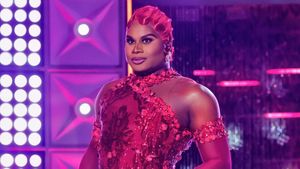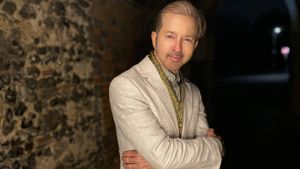A spike in suicide attempts and completions that had been widely talked about in closed Facebook groups became public this month. A Mormon mom revealed that she had personally known of 32 Mormon LGBT youth age 14-20 who had died by suicide, perhaps as a result of a policy and aftermath that has been called "the Prop. 8 of our time." The policy, part of Handbook One, a manual for church leaders, was leaked to the public in early November and affirmed by Church of Jesus Christ of Latter-day Saints leaders shortly after. The policy labels Mormon same-sex married couples as "apostate" and their children ineligible for baby blessings and baptism until the age of 18, if they disavow same-sex marriage and cohabitation.
The policy sent shockwaves through the Mormon LGBT community, causing family rifts, and reportedly an increase in youth homelessness and suicide. Wendy Montgomery shared during a meeting of Affirmation, a supportive group for LDS LGBT people, that family members of 26 Utah youth and six youth from other states who ended their lives had reached out to her during the time following the November policy announcement and through the end of December. Montgomery, mother of a gay son and featured in the Family Acceptance Project film Families Are Forever, is cofounder of Mama Dragons, a group for mothers of LGBT children.
The policy news leak in November was a genuine shock to many people familiar with what had seemed to be markedly improving LDS and LGBT relations. The church did not mount a Proposition 8-type offensive to prevent marriage equality in 2014, and in 2015 it drafted and supported groundbreaking legislation that protects LDS autonomy while affording employment and housing protections to LGBT adults in Utah. Likewise, when the Boy Scouts of America announced its change in policy to accept gay scoutmasters in August of 2015, the church once again decided to note its own objections and requirements, yet not break away from the BSA.
People wondered if the church, now seemingly more accepting, might immediately change the policy after it became public knowledge. Instead hope turned to dismay as the leadership decided to reinforce its message by releasing a video explaining the policy in detail. In January of this year, during a widely marketed online talk to youth, LDS President Russell M. Nelson elevated the leaked policy to the status of revelation. Public reaction to this news was once again swift, with stories of worry and despair from LGBT Mormons and their allies as well as loud defense of the LDS policy by others. It was in this context that Montgomery shared what families had been telling her, and the news spread quickly.
This is the latest instance of LGBT LDS suicide worry in Utah, where documented risks to LGBT youth, particularly those from Mormon families, is often treated with a code of silence and denial. LGBT children kicked out by rejecting Mormon parents also saw an increase, with one youth experiencing rejection from their family home just days before Christmas. Utah youth experiencing homelessness are estimated at 5,000 annually, but, as with LDS LGBT youth suicide, there is no comprehensive data, only estimates and anecdotes which are often dismissed as fabricated. What is known is that 40 percent of youth experiencing homelessness in Utah identify as LGBT, with 50 percent of those from LDS homes. OUTreach Resource Center's data shows consistently over time that 62 percent of LGBT-identified youth have attempted suicide, and virtually all have lost a friend or acquaintance.
The Mormon LGBT community in Utah and beyond has mobilized to provide the extra support needed for children at risk of suicide and at risk of becoming homeless. The "safety net" begun in 2013 has become more effective in assigning volunteers to find appropriate counselors, housing and one-on-one support to youth, parents and families. These efforts are starting to impact Utah government agencies, with the Utah Suicide Prevention Coalition forming an LGBT subcommittee at the request of the newly formed Utah Commission to Prevent and Address LGBT Suicide. In October, Utah State Sen. Jim Dabakis called out the Health Department for not including LGBT youth in its reporting, and since that time both the Health Department, and the Department of Education have been looking to find ways to better prevent LGBT suicide -- and gather data at the same time. The volunteer LGBT Commission isn't waiting for the state but instead is gathering its own data, which will be shared with LDS leaders and Utah officials.
Compounding the risks in Utah is an environment that restricts not only the gathering of data but also the sharing of lifesaving information. State school board guidelines that prohibit "the advocacy of homosexuality" are directly contributing to risk of suicide for youth, both LGBT and straight. Gay-straight alliances, which have been shown to provide a 50 percent reduction in suicide risk for males, both GBT and straight, are becoming even more rare in Utah. New GSAs are routinely refused because the word "gay" is in the title, and many GSAs in the state have been replaced by "Hope Squads," ostensibly to help prevent suicide, but which do not include any reference or supports for LGBT students.
This culture of fear has created a climate where students who request help for suicidal ideation because of LGBT identity may be refused that help, students who mention their orientation are often outed to their parents, and crucially needed suicide prevention education for LGBT children is prohibited for fear it might "promote homosexuality." Teachers who would otherwise be supportive of LGBT students are scared into silence by threats of "investigation and possible discipline." Even Family Acceptance Project materials, accepted as best practice and in the Suicide Prevention Registry, are currently banned from being shared in a large school district which has had many suicide deaths.
It is time for change. GSAs need to be promoted, not restricted, in Utah schools. Teachers need to be able to provide safe learning environments free from fear of retaliation. Effective, comprehensive suicide prevention education needs to be shared widely, including helps and supports for LGBT students. Accurate data needs to be collected and used to create and promote a culture of acceptance and safety for LGBT youth.
It is time for the LDS Church to walk their talk of caring for all youth and to provide protection from those individuals and groups that prevent efforts to keep students safe in Utah and to set an example for other states that protecting youth isn't selling out to temptation, but rather is the godly thing to do.
 Rev. Marian Edmonds-Allen, director of the LGBTQ Youth Continuum of Care, is an expert in youth suicide and homelessness. She is formerly executive director of the Utah Pride Center and OUTreach Resource Centers, and served as the national program director of the Family Acceptance Project. She lives in Utah with her wife and children.
Rev. Marian Edmonds-Allen, director of the LGBTQ Youth Continuum of Care, is an expert in youth suicide and homelessness. She is formerly executive director of the Utah Pride Center and OUTreach Resource Centers, and served as the national program director of the Family Acceptance Project. She lives in Utah with her wife and children.















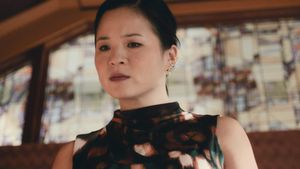

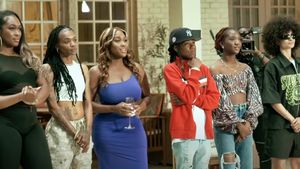













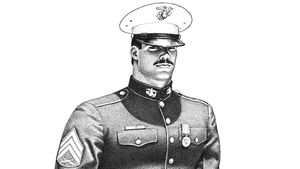
 Rev. Marian Edmonds-Allen, director of the
Rev. Marian Edmonds-Allen, director of the 





